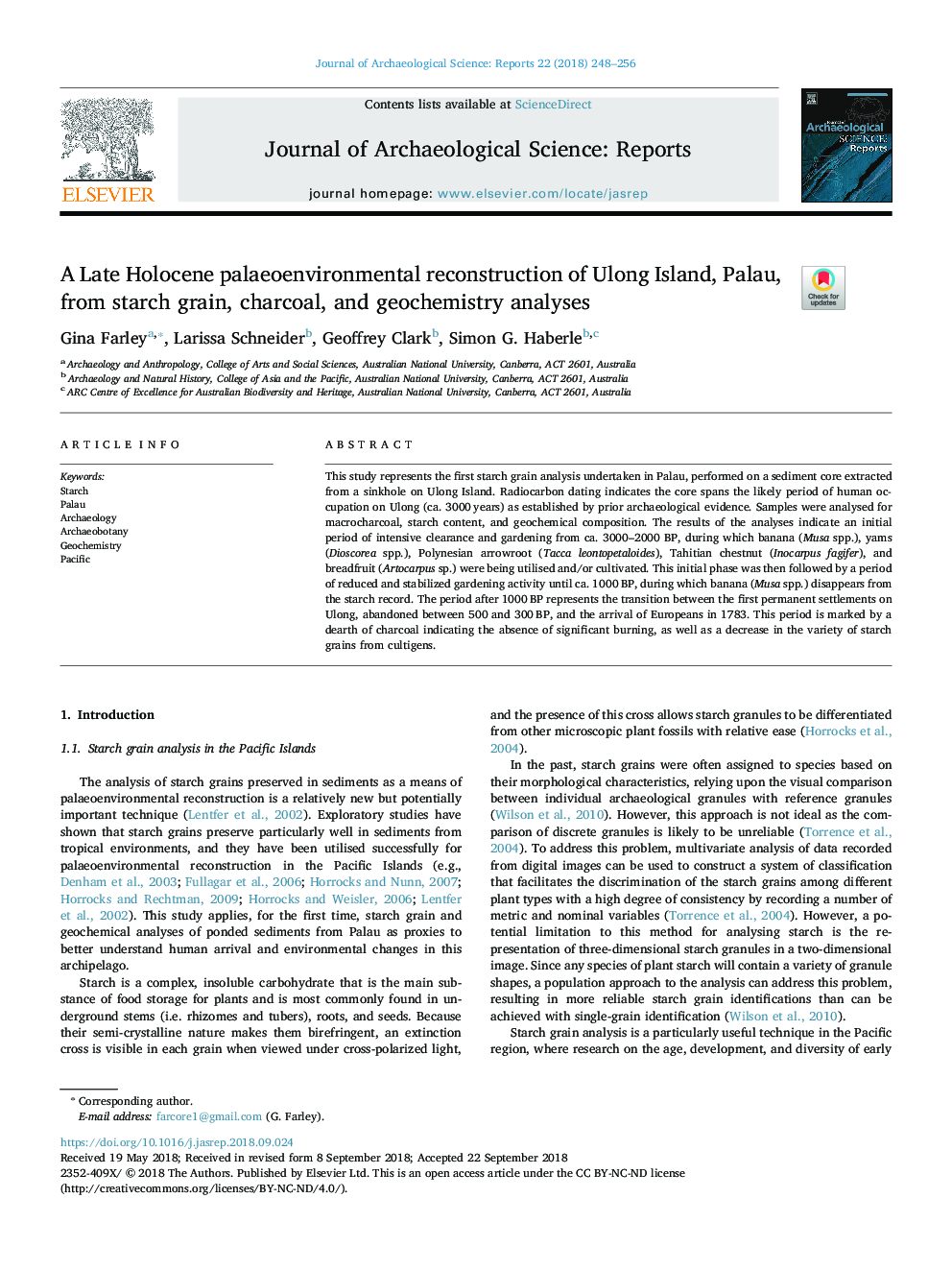| Article ID | Journal | Published Year | Pages | File Type |
|---|---|---|---|---|
| 11263652 | Journal of Archaeological Science: Reports | 2018 | 9 Pages |
Abstract
This study represents the first starch grain analysis undertaken in Palau, performed on a sediment core extracted from a sinkhole on Ulong Island. Radiocarbon dating indicates the core spans the likely period of human occupation on Ulong (ca. 3000â¯years) as established by prior archaeological evidence. Samples were analysed for macrocharcoal, starch content, and geochemical composition. The results of the analyses indicate an initial period of intensive clearance and gardening from ca. 3000-2000 BP, during which banana (Musa spp.), yams (Dioscorea spp.), Polynesian arrowroot (Tacca leontopetaloides), Tahitian chestnut (Inocarpus fagifer), and breadfruit (Artocarpus sp.) were being utilised and/or cultivated. This initial phase was then followed by a period of reduced and stabilized gardening activity until ca. 1000â¯BP, during which banana (Musa spp.) disappears from the starch record. The period after 1000â¯BP represents the transition between the first permanent settlements on Ulong, abandoned between 500 and 300â¯BP, and the arrival of Europeans in 1783. This period is marked by a dearth of charcoal indicating the absence of significant burning, as well as a decrease in the variety of starch grains from cultigens.
Related Topics
Social Sciences and Humanities
Arts and Humanities
History
Authors
Gina Farley, Larissa Schneider, Geoffrey Clark, Simon G. Haberle,
